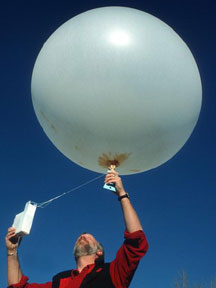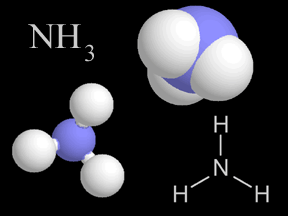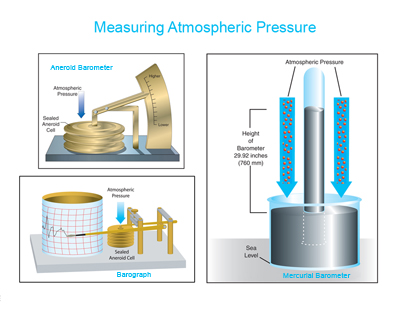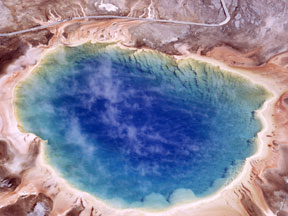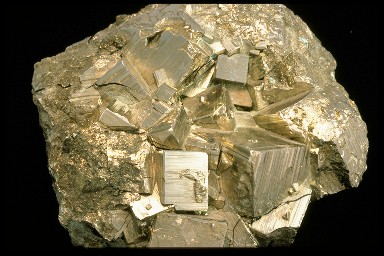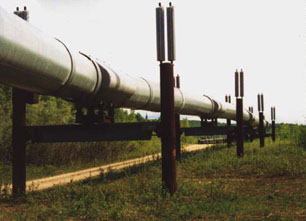Click on image for full size
Image courtesy of the University Corporation for Atmospheric Research.
Related links:
Pressure
When you "blow up" a balloon, you are adding pressure to the inside of the balloon. That makes the rubber in the balloon stretch. The balloon gets bigger. Pressure is an idea scientists use to describe how gases and liquids "push" on things. Air has pressure. When you pump up a tire, you measure the air in it with a pressure gage. When you go to see a doctor, the doctor or a nurse checks your blood pressure. If you dive down under water when swimming in a pool, you can feel pressure from the water pressing on your ears. Pressure is all around us!
Pressure is a force that is spread out over an area. A submarine that is deep under the ocean must have a very strong hull. The pressure of the sea water pushes in on the submarine from every side. The force of that pressure is spread out over the whole surface of the sub.
Gases (like air) and liquids (like water) have pressure. The atoms and molecules in a gas or a liquid are moving very, very fast. They are constantly bouncing off each other like tiny rubber balls. They also bounce off the sides of whatever container they are in. Whenever an atom or molecule hits something, it gives the thing it bumps into a tiny push. Those small pushes may not seem like they would do much. However, when you add up all the pushes from millions of atoms and molecules, they can really make a difference. All of those pushes combine to make pressure.
The atmosphere has pressure. The air pressure in Earth's atmosphere is pretty strong when you are near sea level. When you go higher up, in an airplane or to the top of a mountain, there is less pressure. There is also pressure under water. You can feel water pressure if you dive down to the bottom of a pool. Deep in the ocean, the pressure is really, really strong.
The pressure in the atmosphere isn't the same everywhere. When you watch a weather forecast on TV, they may say that there is a low pressure system coming through. Or they might say that there is a high pressure system nearby. Winds usually blow from a place where pressure is high towards a place where pressure is low.
There are many different units for measuring pressure. In the English system, one unit is "pounds per square inch" (or p.s.i. for short). Notice how this is a force (pounds) spread out over an area (square inches). In the metric system, force (newtons) over area (square meters) is given a special name - "pascals". A pascal is actually a pretty small unit; the pressure of Earth's atmosphere at sea level is 101,325 pascals! That's why you may see the kilopascal (a thousand pascals) used instead.


